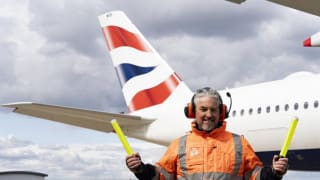5 hacks to help travel bounce back
The sun is finally coming up again for travel brands. Business has been pummelled, first by lockdown and then by a stop-start recovery. Now, there’s new hope for a brighter future.

But the travel sector has emerged, blinking, into a world that is not as it was. So much has changed - for travel brands and for consumers - and the old ways of operating are no longer applicable. So what are the new imperatives for travel marketers today?
Sara Delfini is a travel marketing expert who joined MediaVision as growth marketing lead in 2020 after more than 10 years as a brand marketer with Homeaway.co.uk and Expedia.
Performance Marketing World asked her for a few practical tips to help travel bounce back. Here’s her advice….
1. Scale down to scale up
The huge financial impact of the pandemic on people’s leisure travel budget, along with a potentially sustained increase in demand for domestic holidays, means travel companies need to adapt their offering to capture and convert a different consumer demand than in the past.
Smaller brands may win at this because of their ability to react more quickly than their bigger rivals. And brands which specialise in domestic destinations and property types such as cottages and holiday parks are also likely to be at an early advantage.
So focusing on small scale, domestic travel may prove a good route to growth.
2. Forget “either/or”
There’s a mistake that’s all too common: travel brands focus their marketing strategy on either brand or performance metrics. They need to forget this “either/or” mentality.
Pre-pandemic, we were used to seeing big brands splash their budgets on TV at the peak of the travel demand in January but then have little or no strategy around organic traffic, PPC and social. On the other hand, we’ve seen brands do very well in performance marketing, driving bookings with a very positive ROAS, but which completely miss the opportunity to build a relationship with their customers.
From my experience, brands need to find a balance between driving performance KPIs on one side and brand metrics on the other if they are to maximise the entire funnel of the customer flywheel - from new customer acquisition to engagement and then customer frequency and referral.
The initial booking process itself might not be too complicated but if a customer forgets where he or she booked that amazing holiday last year, it’s a missed opportunity and the job of reaching and attracting that person will have to start all over again.
3. It pays to be niche
By which I mean - don’t go too broad and try to sell everything to everyone. A much better plan is to identify key customer segments with specific pain points that your brand can answer.
The desired spec for a package holiday, or simply accommodation-and-transport, won’t be the same for a family with a baby, as it is for a young couple or for a group of friends. And these demographics are likely to search and book in varied ways too.
Smart brands will tap into those differences and create an offer relevant to them, with specifically-tailored communications.
4. Tool up to jump on new trends
There’s been a reshuffling of traditional travel trends which is perhaps the biggest challenge facing marketers, post-pandemic. And we won’t know for several years how sustained this change will be.
I’ve already mentioned the increased demand for domestic destinations - and, of course, the flipside of that is that the more traditional hotspots have been less popular due to the UK government's traffic light system.
The booking process is also changing: reservations are being made closer to the time of travel and this is likely to affect seasonality in the following months at least.
All this - and other potential changes coming down the line in this new, uncharted post-Covid landscape - will have an impact on travel companies’ planning.
Travel brands now need to listen more closely and constantly to consumer demand such as MediaVision’s Digital Demand Tracker .
And then….they need to react at a much faster pace.
It’s no longer possible to rely on the more traditional corridors and destinations and marketing should incorporate CRO and onsite UX to boost onsite engagement and conversion.
5. Be clear about who you - and your customers - are
Again, this is particularly relevant for smaller, boutique travel brands looking to get noticed in a saturated market.
It’s crucial to have a clear brand positioning and proposition, and then to create offers based on demand. In such a critical moment as this, it’s hugely important for smaller brands to use their marketing budget efficiently and go after the audiences that are most relevant for them.
This is also where maximising the cross-channel mix across the entire funnel, from customer acquisition and conversion to retention and referral, is so key, boosting loyalty and bookings from existing customers.
And one more thing...track and test
Track, measure, test and learn; this has to be an ongoing part of travel brands’ strategy for the future. Which also means being open to listen to fresh demands and test new channels. The upside is clear: lower cost customers and a more robust ROAS!








